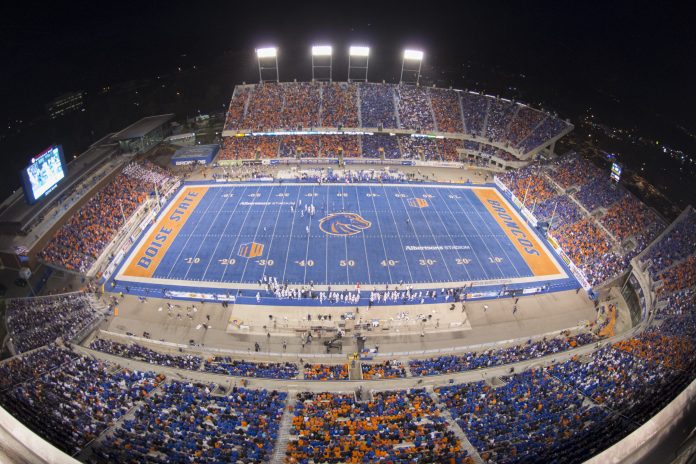Boise State Athletics partnered with Verizon to install a new cellular distributed antenna system (DAS) that will be unveiled for the 2021 season.
The DAS will improve cellular coverage in and around Albertsons Stadium on game days.
“There is no detail too small as we evaluate the game day experience for Bronco Nation,? Director of Athletics Jeramiah Dickey said. ?”This new system opens the door for so many touch points ? from mobile ticketing to how our fans are able to share and access digital content from Albertsons Stadium while attending our games.
“As we prepare for capacity crowds, and as fans are looking to share their experiences and engage with other members of our fanbase, this will certainly be a noticeable difference to the fan experience,? Dickey added.
The new system, which includes the latest technology from Verizon and tripled the number of previously-available antennas, is designed to allow future adoption by additional carriers.
The new system will also allow Boise State fans to access the Broncos’ new gameday app, which will officially launch on August 2.
The DAS was slated to be unveiled for the 2020 season, but installation was postponed as a result of the COVID-19 pandemic.
?Right now we have 5G Ultra Wideband in 60 arenas and venues so people can experience ultra-fast wireless speeds, up to 4 Gbps in some places under ideal circumstances, giving them the potential to download and stream content in seconds, videoconference and collaborate on the go in near real time, and take advantage of new immersive customer experiences never before available wirelessly,? Brian Mecum, VP of device technology at Verizon, previously told In-Building Tech.
?We are also working with teams, and leagues to explore how 5G?s massive bandwidth, low latency and super-fast speeds can be used by teams to do things like analyze player performance in real-time to give players and coaches a better understanding of player?s movement, mechanics, and progress. With 5G Ultra Wideband, teams also have the ability to create immersive fan experiences and arenas have the ability to utilize next-generations solutions to innovate public safety, access, concessions and crowd management,? Mecum said.
According to the executive, the pandemic has put the need to rethink the large, in-stadium experience into overdrive. ?At Super Bowl LV, we invested over $80 million dollars to enhance our network to support the event with 5G enhancements and mobile edge compute (MEC) that will enable solutions for safety, concessions, crowd management, access and more. These solutions are being tested now and will be ready to change the in-venue experience when we?re back to capacity.?
At venues, free flowing access and reduction of choke points is paramount and social distancing and safety require new ways of thinking about this, Mecum said. ?Knowing who is and who isn?t supposed to be in the venue is also mission critical.? Finding ways to seamlessly screen entryways using facial recognition technology running on 5G and MEC can make it possible to identify and recognize employees and players fast.?

